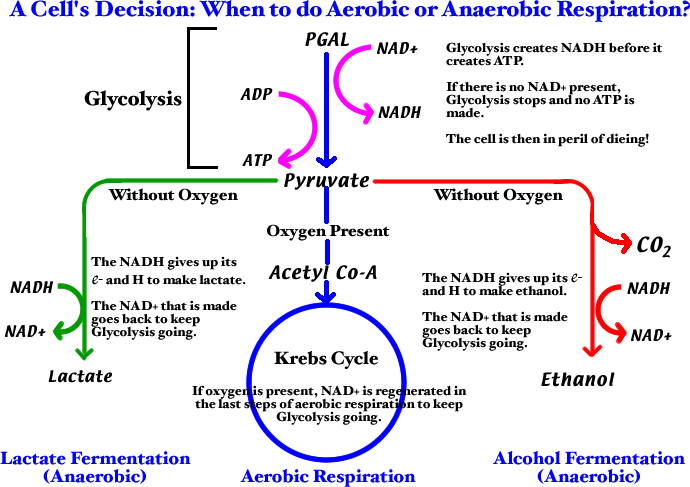What is Lactic Acid? And Does it Cause Muscle Soreness?
When our bodies perform strenuous exercise, our respiration rate and heart rate increase as our bodies try to shuttle more oxygen to our hard working muscles. The body prefers to generate its energy by way of aerobic pathways (with oxygen) because doing so is most efficient. Sometimes if the body is pushed hard enough it has to move to a pathway of energy production that is anaerobic (without oxygen) because our bodies need to produce energy faster than our bodies can supply oxygen.
Energy in our bodies comes from glucose and through a process called glycolysis, glucose is broken down or metabolized into a substance called pyruvate. Under normal circumstances, pyruvate is shuttled down the aerobic pathway to be further broken down for energy. When oxygen to the muscles is limited, however, muscles convert pyruvate into lactate, which allows glucose breakdown and thus energy production. Muscles can perform anaerobically for a short period of time before lactate accumulates to high levels.
As lactate builds up in the muscle cells the acidity inside the cells increases which causes the same metabolic pathways that permit the breakdown of glucose to energy to perform poorly. Essentially, the muscle produces lactate which slows it’s capacity for more work. That might sound counterproductive, but it’s a natural defense mechanism for the body. It keeps us from doing permanent damage during extreme exertion. As you’re forced to slow down, oxygen again becomes available and lactate reverts back to pyruvate, allowing the body to recover.
Lactic acid is one among many metabolites that buildup and cause the burning sensation felt during extreme exertions. This is where the tales of Tour de France riders laying with their legs overhead against a wall for hours to “drain” the lactic acid and recover comes into the story. Contrary to popular belief and opinion, lactate (often referred to as lactic acid) buildup does not cause muscle soreness in the days following strenuous exercise. In fitness terms, lactic acid does not cause delayed onset muscle soreness (DOMS).
This isn’t exactly news either, for a long time now research has shown that lactate levels right after exercise do not correlate with the level of muscle soreness felt a few days later. Intuitively, I think this makes sense. You can go for a long ride one day at 50-70% of FTP and be very sore a day or two later without ever having felt the lactic acid burn during the ride. Conversely, you can jump on a bike and bust out some HIIT in just 5 minutes and feel the burn for nearly the whole time without any soreness in the following days.






